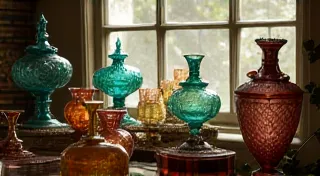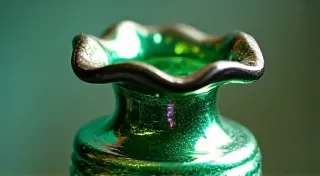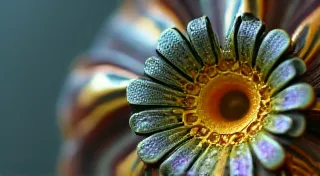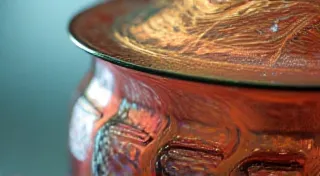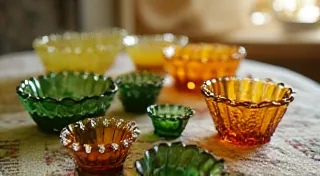Identifying Carnival Glass: A Practical Guide to Marks, Factories, and Techniques
Identifying carnival glass can be tricky! It's a beautiful and often elusive treasure, and separating genuine antique pieces from modern reproductions requires careful observation and a bit of knowledge. This guide offers practical tips and techniques to help you confidently assess your finds and understand the nuances of carnival glass production.
What is Carnival Glass? A Quick Recap
Carnival glass is a type of pressed glass manufactured primarily between 1903 and 1923, although sporadic production continued for several years after. Its iridescent surface, achieved through a chemical glazing process, is its defining characteristic. The "iridescence" isn’t painted on; it's the result of a chemical reaction between the glass composition and metallic oxides applied during manufacturing. This creates a shimmering effect that changes with the angle of light, mimicking the appearance of more expensive art glass. Understanding the subtle variations in iridescence is key to discerning genuine pieces from modern interpretations, a skill developed through practice and careful comparison – a journey many collectors find incredibly rewarding.
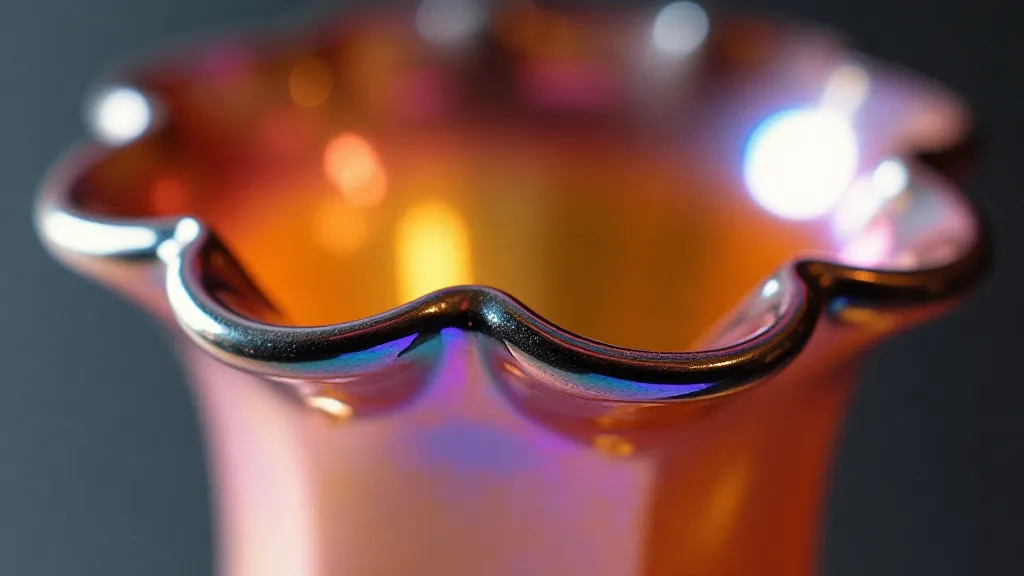
Factory Marks: Clues to Origin
While not all carnival glass pieces are marked, those that are offer valuable clues about their origin. Unfortunately, many factories didn't consistently mark their wares, and some marks were deliberately obscured to deceive buyers. Here's a look at some of the more commonly encountered marks:
- Northwood: Look for variations including “Northwood,” “N,” “NW,” and a stylized “N.” Northwood was the largest producer of carnival glass.
- Fenton: Early Fenton marks often included “Fenton Art Glass Co.” or simply “Fenton.” Later marks were more abbreviated.
- Imperial: Imperial markings include “Imperial” and stylized “I” marks. Imperial’s production was more limited than Northwood or Fenton.
- Dugan: Dugan marks are less common, often consisting of a stylized "D" or "DG."
- Hawkes: Hawkes marks are less prevalent than others, but can be identified by names or stylized “H” marks.
Important Note: Markings can be faked! Carefully compare any mark you find with reliable references (see resources at the end of this article) to ensure its authenticity. Many collectors start with a general understanding of the most common manufacturers before delving into the nuances of identifying specific marks. It’s a process of continual learning, and exploring resources detailing rare and valuable carnival glass pieces can be a fantastic way to accelerate that learning.
Manufacturing Techniques and Identifying Features
Beyond markings, examining the manufacturing techniques can provide valuable insights:
- Pressing Marks: Pressing was the primary method used to shape carnival glass. Look for subtle imperfections and seam lines – these are hallmarks of pressed glass.
- Mold Lines: Like pressing marks, mold lines are common. They show where the glass was pressed into the mold.
- Air Bubbles: Small air bubbles trapped within the glass are not uncommon, especially in earlier pieces. These imperfections, while often considered flaws by modern manufacturers, are a testament to the handcrafted nature of antique carnival glass.
- Color and Pattern Variations: The color and pattern of carnival glass can vary significantly, even within the same factory and mold. This is due to slight variations in the glass composition and application of metallic oxides. Understanding how these variations influence value is a key element in building a carnival glass collection, particularly when seeking out specific patterns or color combinations.
- Glass Thickness: Carnival glass tends to be relatively thin compared to other types of antique glass.
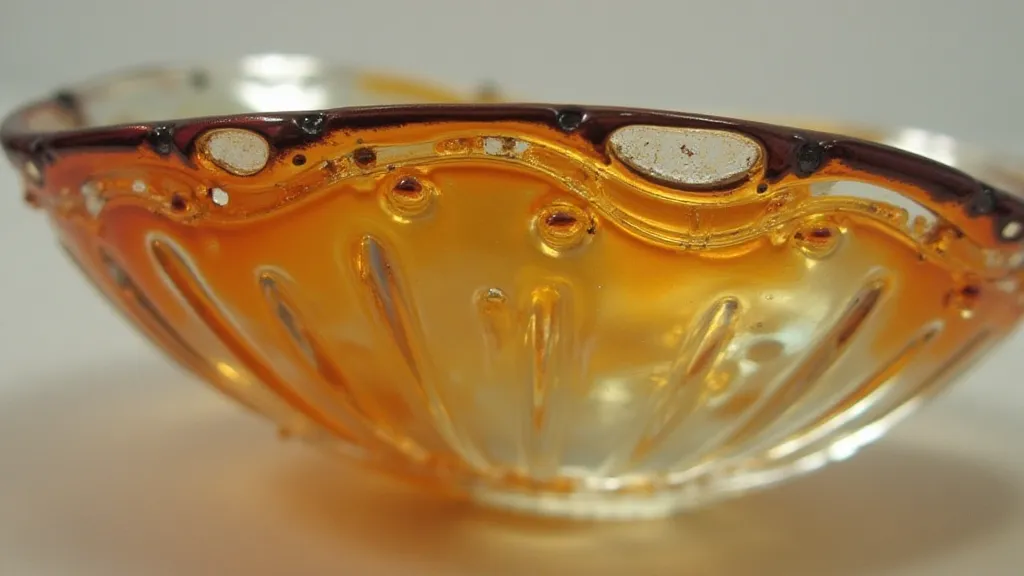
Spotting Reproductions: What to Watch Out For
Modern reproductions of carnival glass are becoming increasingly sophisticated, but there are still telltale signs to look for:
- Perfect Iridescence: Reproductions often have an overly consistent and "perfect" iridescence, lacking the subtle variations found in genuine antique pieces. This "too perfect" look is a telltale sign, as the chemical processes used in original manufacturing rarely produce uniformity.
- Lack of Imperfections: Genuine antique carnival glass often exhibits small imperfections – bubbles, mold marks, and slight color variations. Reproductions tend to be "too clean."
- Heavy Glass: Reproductions are sometimes made from thicker glass to mimic the perceived quality of older pieces.
- Incorrect Colors: While modern manufacturing can replicate some of the classic carnival glass colors, some colors are simply not possible with the original techniques. Research the color palettes of known manufacturers. Understanding the historical context of color production is also helpful when distinguishing genuine pieces from modern imitations, and helps illuminate the subtleties explored in articles about carnival glass vs. iridescent glass.
Common Carnival Glass Patterns to Know
Familiarizing yourself with popular patterns is crucial for identification. Some well-known patterns include:
- Green Carnival: One of the most common and affordable patterns.
- Purple Carnival: Highly sought after and typically more valuable.
- Vaseline/Butter Yellow Carnival: Named for its resemblance to the color of butter.
- Black Carnival: Relatively rare and highly collectible.
- Peach Blow Carnival: This early variant is often prized.
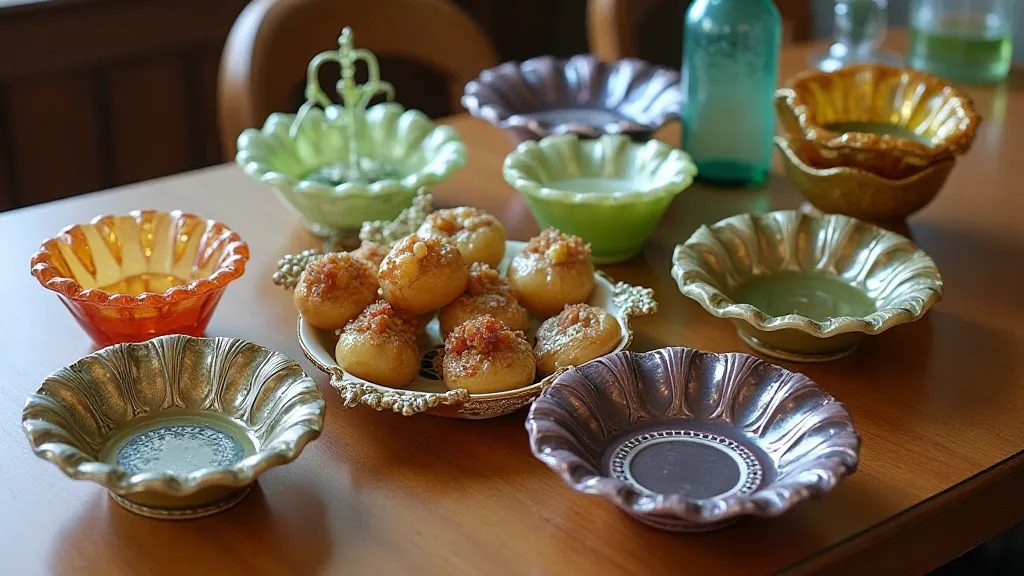
The appeal of "Butter Yellow" Carnival glass is particularly captivating, driven by its rarity and the unique, warm glow it possesses. The intricate chemical process that creates this specific hue makes it a coveted treasure among collectors, and highlights the complexities that contribute to its value. Collectors often spend considerable time and effort to procure pieces of this distinctive color, further solidifying its position as one of the most sought-after varieties, as explored in detail in our article on "Butter Yellow" Carnival Glass: Rarity and Appeal.
Deeper Dive: The Chemical Reaction Behind the Iridescence
The iridescence isn't simply a surface coating; it's a result of a chemical reaction occurring *within* the glass. During manufacturing, a chemical flux was applied to the surface, which then reacted with the glass matrix and metallic oxides during the firing process. This creates a thin layer of metallic compounds that interfere with light, producing the characteristic rainbow effect. The specific composition of the glass and the chemicals used, along with firing conditions, all influence the intensity and color of the iridescence. Reproductions often mimic the *appearance* of iridescence but lack the true chemical reaction, resulting in a superficial effect.
The Importance of Condition
Beyond identification and valuation, the condition of a carnival glass piece significantly impacts its desirability. Chips, cracks, and excessive scratches detract from its value. While minor wear is expected in antique pieces, significant damage warrants careful consideration. Collectors often prioritize pieces with minimal imperfections, even if it means paying a premium.
Resources for Further Research
Identifying carnival glass is an ongoing learning process. Here are some resources to aid your journey:
- Books: Numerous books are dedicated to identifying and collecting carnival glass.
- Online Forums and Communities: Connect with other collectors and enthusiasts.
- Museums and Auctions: Examine authentic pieces firsthand.
With practice and careful observation, you can develop your skills in identifying carnival glass and appreciate the beauty and history of this unique form of collectible glass.
